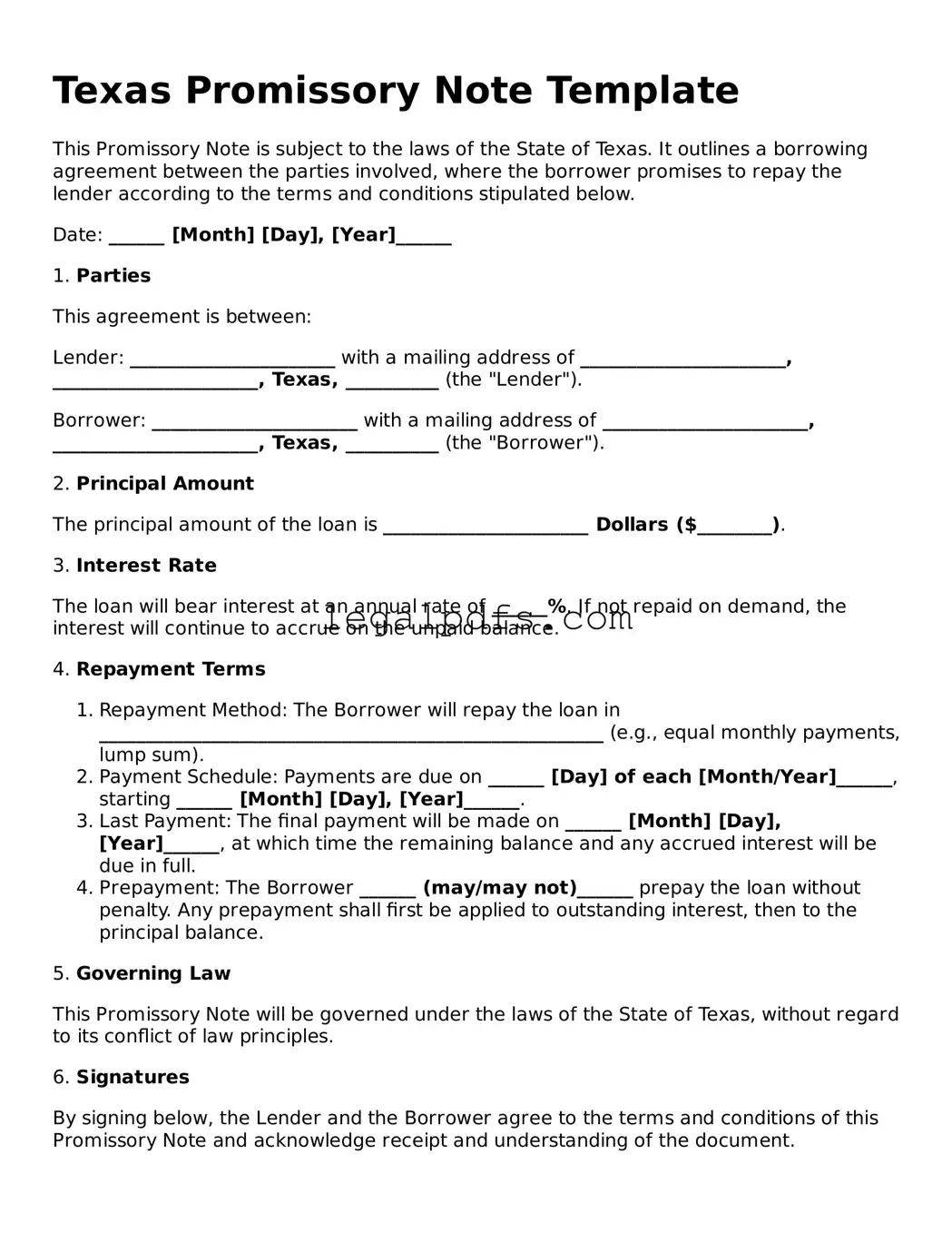Texas Promissory Note Template
This Promissory Note is subject to the laws of the State of Texas. It outlines a borrowing agreement between the parties involved, where the borrower promises to repay the lender according to the terms and conditions stipulated below.
Date: ______ [Month] [Day], [Year]______
1. Parties
This agreement is between:
Lender: ______________________ with a mailing address of ______________________, ______________________, Texas, __________ (the "Lender").
Borrower: ______________________ with a mailing address of ______________________, ______________________, Texas, __________ (the "Borrower").
2. Principal Amount
The principal amount of the loan is ______________________ Dollars ($________).
3. Interest Rate
The loan will bear interest at an annual rate of ______%. If not repaid on demand, the interest will continue to accrue on the unpaid balance.
4. Repayment Terms
- Repayment Method: The Borrower will repay the loan in ______________________________________________________ (e.g., equal monthly payments, lump sum).
- Payment Schedule: Payments are due on ______ [Day] of each [Month/Year]______, starting ______ [Month] [Day], [Year]______.
- Last Payment: The final payment will be made on ______ [Month] [Day], [Year]______, at which time the remaining balance and any accrued interest will be due in full.
- Prepayment: The Borrower ______ (may/may not)______ prepay the loan without penalty. Any prepayment shall first be applied to outstanding interest, then to the principal balance.
5. Governing Law
This Promissory Note will be governed under the laws of the State of Texas, without regard to its conflict of law principles.
6. Signatures
By signing below, the Lender and the Borrower agree to the terms and conditions of this Promissory Note and acknowledge receipt and understanding of the document.
Lender Signature: ______________________ Date: ______ [Month] [Day], [Year]______
Borrower Signature: ______________________ Date: ______ [Month] [Day], [Year]______
